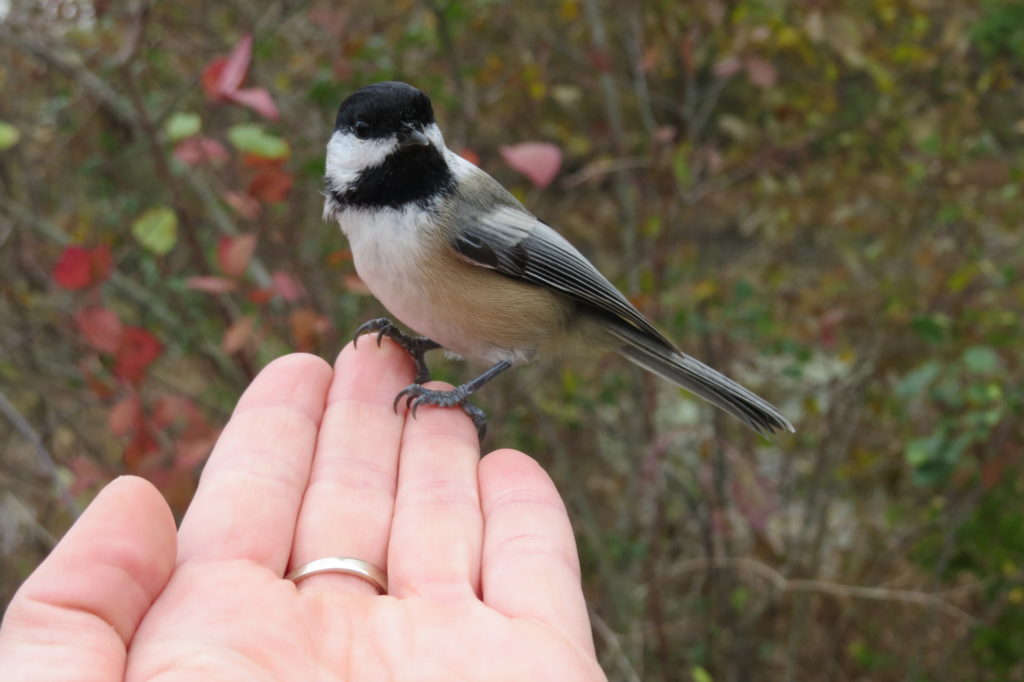

The female builds a cup-shaped nest with moss for the foundation, lining it with rabbit fur or other soft material. Chickadees will nest in rotted, old wooden fence posts and abandoned mailboxes, and a pair once built a nest in an old shoe hanging from a line. They’ll choose abandoned woodpecker cavities and man-made nest boxes, or excavate their own small, natural cavities. In February, chickadees begin singing and looking for a cavity hole in which to nest-and there’s a wide variety of homes they’ll find suitable. A black-capped chickadee enjoys a plentiful and tasty treat in early February: berries. Supplemental food, especially sunflower seed from feeders has been shown to help these little balls of feather and hollow bones survive when it gets really cold and wet outside. Those who feed birds can observe an interesting behavior in chickadees-they form a hierarchy, meaning the top chickadee gets to eat at the feeder first-it snatches a seed and leaves, then the second in command gets its turn. Chickadees eat berries and animal fat in winter, and they readily come to feeders feasting on seeds and suet.

They also stash seeds to eat later, and unlike squirrels, they remember where they put them. While some birds need to leave the region in fall because insects and other food will soon become difficult to find, chickadees know how to find insect larvae overwintering in tree bark (although flocks of chickadees do make small geographic movements, depending on food availability in colder months). These birds can lower their body temperature when sleeping at night, which protects them from freezing. The black-capped chickadee is considered a non-migratory species-it can survive the harsh winters of northern Illinois.
CHICKADEE HEY SWEETIE CALL FREE
Come #birdthepreserves with the FPDCC there is a free walk at the Gardenon September 17, 7:30 to 9 a.m. The black-capped chickadee is the September bird species highlighted by the Forest Preserves of Cook County. Its telltale black cap and throat with white cheeks makes it easy to identify. Because of its curiosity and propensity to visit feeders, the black-capped chickadee ( Poecile atricapillus) can often introduce youngsters and adults to bird-watching. Nothing brightens a mid-February day more than when a chickadee sings because to those who hear it, the song signals spring’s arrival. The chickadee’s song-translated as “Hey, sweetie,” (though you can’t often hear the third syllable)-is reserved for late winter, spring, and summer, when the bird is courting and nesting. It’s often heard in late summer and fall as chickadees gather in family groups and small feeding flocks to prepare for the winter. This lesson is a companion for the Bird Academy’s All About Bird Song module.Most people recognize that familiar call of the black-capped chickadee.

A territorial “gargle” sound given when one chickadee intrudes on another chickadee’s territory or when two chickadees in a flock get too close together or are “arguing” over food, usually given by the dominant bird.Interspersed with the “chickadee-dee-dee” call are scolding, high-pitched “see” notes. In this call, you can hear several chickadees joining into the chorus of alarm. An increasing numbers of “dee” notes indicates an increasing level of alarm. Danger or alarm callfor when a predator is nearby.Contact call, chipping chickadees foraging with other birds.

CHICKADEE HEY SWEETIE CALL DOWNLOAD
Download the Lessons Black Capped Chickadee ()


 0 kommentar(er)
0 kommentar(er)
